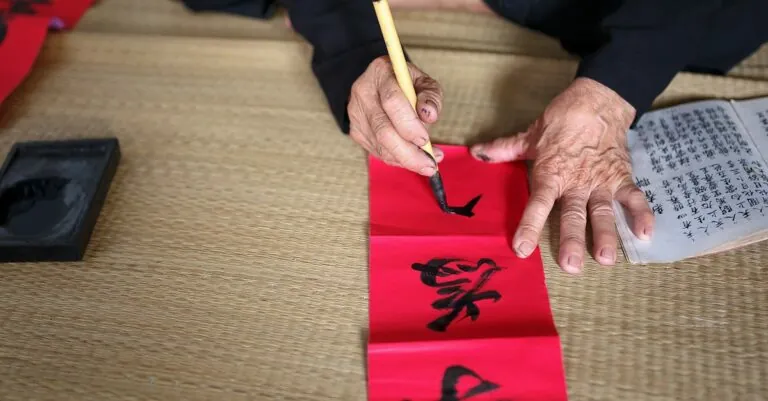Table of Contents
ToggleIn a world where instant gratification reigns supreme, waiting for a webhook response can feel like watching paint dry. Webhook latency handling is the unsung hero of seamless integrations, ensuring that data flows smoothly without making users feel like they’re stuck in a time warp.
Understanding Webhook Latency
Webhook latency refers to the delay between an event occurring and the resulting notification sent to a user or system. This delay can significantly impact user experience in systems that rely on real-time data exchange.
What Is a Webhook?
A webhook is a user-defined HTTP callback triggered by specific events in a web application. When an event occurs, the source application sends a payload of data to a predetermined URL. Developers utilize webhooks for various purposes, such as API integration and notifications. Examples include payment processing, form submissions, and updates from third-party services. By employing webhooks, applications can communicate efficiently without continuous polling.
Importance of Latency in Webhooks
Latency plays a critical role in webhook performance and user satisfaction. High latency can cause delays in data delivery, disrupting workflows and user interactions. Real-time applications depend on minimal latency for seamless updates. Users expect instant feedback; thus, even a few seconds can result in frustration. Monitoring and optimizing webhook latency ensures timely notifications, enhancing overall service reliability. Continuous assessment of latency metrics allows developers to identify bottlenecks and implement solutions.
Common Causes of Webhook Latency

Webhook latency can stem from several factors, impacting the efficiency of real-time data communication. Addressing these causes ensures timely notifications and enhances user satisfaction.
Network Issues
Network issues can create significant delays in webhook latency. Poor internet connections can hinder the speed of data transmission. Packet loss may also occur, disrupting communication. Latencies often arise from high latency networks due to routing problems and congestion. Solutions could include optimizing network paths or upgrading bandwidth to improve performance.
Server Overload
Server overload is another primary cause. When servers receive too many requests simultaneously, response times slow down. Resource limitations on servers, such as CPU and memory constraints, can exacerbate this issue. Load balancing techniques can distribute incoming traffic evenly, preventing one server from becoming a bottleneck. Regular monitoring of server performance helps identify peak usage times and plan accordingly.
Processing Delays
Processing delays occur when back-end systems take longer than expected to handle webhook requests. Complicated business logic or inefficient algorithms can contribute to slow processing. Asynchronous processing methods may alleviate these delays by queueing requests for later handling. Developers often analyze and optimize code to enhance execution speed, leading to improved webhook response times.
Techniques for Handling Webhook Latency
Handling webhook latency effectively enhances real-time interactivity. Various techniques exist to mitigate delays and improve responsiveness.
Optimizing Payload Size
Optimizing payload size reduces the amount of data transmitted during webhook calls. Smaller payloads result in quicker transmission times, enhancing overall latency. Developers should compress data when possible, eliminating unnecessary fields. Minimizing the data sent expedites processing and improves both speed and efficiency. Adopting formats like JSON or Protocol Buffers can also streamline payload structures significantly.
Implementing Retries
Implementing retries addresses temporary network errors that can occur during webhook transmissions. If a notification fails to reach its destination, a designated retry mechanism automatically resends the request. Configuring this mechanism involves determining the retry intervals and maximum attempts. Developers can implement exponential backoff strategies, where intervals increase after each failed attempt. This ensures that the system remains responsive while preventing excessive load during high latencies.
Using Queue Systems
Using queue systems effectively manages incoming webhook requests during peak loads. Message queues decouple the data producer from the consumer, allowing asynchronous processing. This leads to reduced latency as requests get queued and processed in the background. Tools like RabbitMQ or Amazon SQS facilitate message routing and delivery, enhancing scalability. Developers can implement worker processes that pull requests from the queue, ensuring timely notifications even amidst heavy traffic.
Best Practices for Webhook Latency Management
Managing webhook latency effectively involves several best practices that ensure responsive interactions and maintain high service reliability.
Monitoring and Analytics
Monitoring webhook performance involves tracking latency metrics and analyzing patterns. Setting up tools to collect real-time data helps identify delays in notifications quickly. Data visualization dashboards can offer insights into response times and success rates. Analyzing this information enables developers to pinpoint bottlenecks in the system. Continuous evaluation of metrics allows for timely adjustments and enhances overall performance. Implementing alerts for unusual latency spikes can facilitate proactive measures to mitigate issues before they affect users.
Setting Up Timeouts
Setting timeouts effectively helps manage webhook requests and responses. Developers can configure specific time limits for receiving acknowledgments to avoid prolonged waiting periods. A well-defined timeout duration balances between allowing enough time for processing requests and minimizing user frustration from delays. Retries can be implemented after timeout occurrences to ensure no critical notifications are missed. Utilizing different timeout settings based on the operation’s complexity allows tailored approaches that match each scenario, leading to improved reliability and user satisfaction.
Documentation and Support
Providing thorough documentation for webhook integrations enhances user experience significantly. Clear guidelines on expected response times and handling errors should be included. Comprehensive FAQs assist developers in troubleshooting common latency issues. Furthermore, establishing a support channel helps users report challenges they encounter. Regularly updating documentation ensures that it reflects the latest practices and optimizations. Accessible support resources encourage users to engage confidently with the system, knowing assistance is readily available when needed.
Effective webhook latency handling is vital for maintaining user satisfaction and seamless data communication. By addressing common causes of latency and implementing best practices, developers can significantly enhance the performance of their systems. Optimizing payload sizes and utilizing retry mechanisms can streamline data transmission and ensure timely notifications. Additionally, leveraging queue systems during peak loads helps manage webhook requests efficiently.
Continuous monitoring and analytics play a crucial role in identifying latency issues. By keeping documentation up to date, users can navigate potential challenges with confidence. Prioritizing these strategies not only improves user experience but also strengthens the overall reliability of real-time applications.







